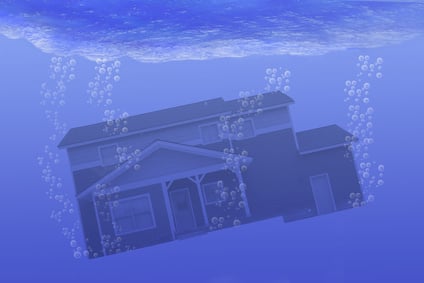Last week the Federal Reserve held a policy forum in Washington, DC called "The Housing Market Going Forward, Lessons Learned From The Recent Crisis". At this forum Fed Governor Elizabeth A. Duke gave a presentation entitled "Rebalancing The Housing Market".

A staggering 2/3 of underwater homes are prime of FHA insured © greenfire - Fotolia.com
While much of the presentation centered on the current discussion of how to get housing back on track, there was one comment that avoided media scrutiny, but has particularly negative implications for the ongoing housing crisis.
During her presentation, Ms. Duke pointed out that:
"Although problems were concentrated initially in subprime mortgages, today about two-thirds of underwater mortgages and loans in foreclosure are actually prime or Federal Housing Administration (FHA) mortgages."
This is an amazing number, when you consider that prime and FHA insured mortgages have traditionally been among the "safest" investments in the entire U.S. housing industry, and historically have had very low foreclosure rates, averaging around 3 to 5% of those loans. While exact numbers are difficult to come by, an estimated 24% of all home mortgages in the U.S. are "under-water", meaning that the home owner owes more on the mortgage than the home is worth.
Most borrowers who purchased a home in 2005, 2006, 2007 and 2008 are likely underwater, as their purchases were made at or near the peak of the housing market. Virtually all properties sold during that time had prices that were higher than today's current values.
FHA is not a lender, they are an insurer. Every FHA loan that defaults means that the taxpayers pick up the tab for the loss. The property is then placed back on the market as a "HUD Home", and is auctioned off via HUD's online auction process. FHA is facing potential losses in the tens of billions of dollars if this level of foreclosure activity continues. FHA is the loan of choice for virtually all first time home buyers, and has been carrying much of the new mortgage burden since the housing market collapse, because investors are very reluctant to invest in mortgages that are not government backed.
The FED is also expecting about 3 million more foreclosures to hit the market as "bank-owned" homes or "REO's" as the industry calls them, between 2011 and 2013. This it not total foreclosures, this is only the estimated number that will end up being taken back by the bank, which most commonly means Fannie Mae and FHA. These agencies will pick up the lions share of the foreclosed properties, since they own (Fannie Mae) or insure (FHA) the majority of these mortgages.
While the federal government and the Federal Reserve are currently discussing ways of dealing with this crisis, most of the potential solutions being discussed would mean that someone would have to absorb a share of the losses. Mortgage write-downs have been discussed, but dissing MBS investors would probably mean much less private capital available for new mortgages for years to come. Extending mortgages and reducing payments is another idea under discussion, but these usually mean significant costs are added to the existing mortgage, and may reduce the mortgage payment in the short term, but only add to the problem of being "under-water", thereby motivating more home owners to abandon their property.
Not much is clear about where this housing market is headed, and what it will take to get it back on track. But one thing is very clear - that taxpayer liability for the ongoing losses will continue to mount.
Is there a point of no return?
well I guess that depends on how you define that term "point of no return". Given that these are government insured (read "taxpayer backed") loans, the defaults will be covered. But it does not bode well for the future of investment in the mortgage backed securities market. If default rates are higher on prime loans, the interest rates demanded from investors would most assuredly be higher.